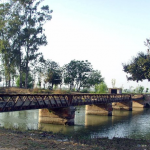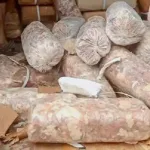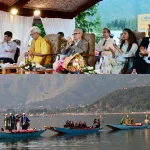Development in areas of Jammu & Kashmir illegally occupied by Pakistan was mentioned in the Assembly of Jammu and Kashmir on Tuesday March 4, 2025. NC members tried to portray areas of POJK as more developed as compared to the Jammu Kashmir. Assembly members of BJP rebuffed the attempt forcefully and intensely. Chief Minister Omar Abdullah had to intervene.
“We have to accept that while there is limited development in our frontier areas, on the other side, there have been deliberate attempts to showcase progress. However, this so-called development was facilitated by China, not Pakistan,” the Chief Minister said.
Was it casual? Why did the members of NC mention POJK development and why did Omar Abdullah implicitly endorse the same? This legitimate query needs scrutiny.
Habitual Offender
National Conference and its leadership is habitual offender in this politics of double speech, deception, delusion and deliberate attempt to shift narratives. It has repeatedly tried to move away from public scrutiny by making controversial statements whenever it finds itself in a tight spot. Thereby surcharging the environment emotionally remains only way out.
People remember that infamous speech of Sheikh Abdullah at Ranbirsinghpura Jammu on April 10, 1952 where he dismissed full integration into India as “unrealistic, childish and savouring of lunacy” only to dismissing the idea of independence as foolish in the Madras Congress session soon after.
Green Handkerchief and rock salt is also fresh in public memory. So is the support or use of plebiscite front, Al-Fatah to KLF, social boycott of political adversaries etc. etc. They may declare from rooftops that Jammu Kashmir acceded to the India of Gandhi ji but did not allow the statue of the apostle of non-violence to be installed in the premises of High Court of Jammu and Kashmir in Srinagar.
While in government they use hard language against separatists & anti-Indian elements and plead/enact strong Laws like PSA but make hue and cry when out of power. One day they question the Instrument of Accession on another day they would ask to teach Pakistan a lesson.
Why POJK Now
Post 2019 historic decision of full integration of Jammu Kashmir with rest of the country has transformed Kashmir. Walls of distrust, disbelief and uncertainty about the status of Jammu Kashmir were demolished in one stroke.
Threats of bloodshed, large scale violence and widespread mayhem proved to be a hoax. Credit goes to the people of Jammu Kashmir who behaved maturely and proved these prophets of doom wrong.
Jammu Kashmir in turn was blessed with peace tranquillity, accelerated pace of development and innumerable opportunities unfolding. Politics of blackmail and role of political commission agents got eliminated. Fears of rest of the country swallowing Kashmiris were found to be groundless.
Central government took great interest & initiatives in improving the quality of life, instituted a host of people-friendly enterprises in the field of tourism, comprehensive programmes to empower locals and infrastructural development activities.
G20 meeting and Formula 4 race event were staged in Srinagar. Train connectivity established. Record number of flights handled at Srinagar Airport and number of steps like that enthused people to shun the politics of emotionalism.
Empowerment of common people by strengthening of 3-tier Panchayat Raj, first ever DDC elections and extension of reservation benefits to the entitled underprivileged sections of population like STs and OBCs virtually eroded the base of traditional politics in Kashmir. To stop further erosion and attempt a reverse of tide is one major reason behind these unsolicited remarks in the state assembly.
Other off course is the growing resentment of people of POJK against Pakistan establishment and cry for integration with India. Although the current uprising there is predominantly centred around economic issues, there is a deeper underpinning of issues of political economy and political freedoms that appear to be sustaining the movement
Factual comparison
Comparative study of development and freedom and other parameters will expose the NC design further. Several individuals and organisations have been studying Jammu and Kashmir keenly. organisation Law and Society Alliance ¬is an independent Indian national growth organisation providing legal and knowledge intervention on issues that need study and research, data mining and analysis, and prolonged ground work. It also studied and released a report listing the comparison between PoJK, JK and Gilgit-Baltistan as far as the condition of living is concerned. The study was a mapping exercise of human development and human rights conditions existing in J&K and PoJK along with G-B, followed by a comparative analysis of development components under various categories. Most of the data relied upon by the organisation are open-source data like media reports, government reports, research carried about local, national and international NGOs etc. There are several aspects that were compared in the report as far as the living conditions; human rights conditions and development in the respective regions are concerned.
Some points that have been highlighted in the report are like the Budget allotted to PoJK by Pakistan and JK by India, the report says that the PoJK government allocated PKR (Pakistani Rupee) 12,156 crore or US$773 million for its 2019-20budget. On the other hand, J&K spent INR (Indian National Rupees) 88,911 crore or US$12.4 billion in the fiscal year 2019-20 (This has since been enhanced to Rs. 1,18,728 Crores in 2024-25).
Essentially, India allocated funds which as 16 times higher compared to the amount spent by Pakistan in Pakistan occupied Kashmir.
The literacy rate in Gilgit-Baltistan was at an abysmal stage, at 14% for men and 3.5% for women. In Pakistan Occupied Kashmir, the literacy rate was at 60%. The literacy rate in Jammu and Kashmir, on the other hand, was 67.16%.
The report states that there are currently six small and big universities in PoJK. Except for the University of Azad Kashmir, all other universities were founded in the 21st century and are yet to be fully developed. As of now, there are ten major State Universities and two major Central Universities in J&K: one Central University in each part of the state – Central University of Jammu and Central University of Kashmir. In addition, there are four premier Institutes of National Importance including Indian Institute of Technology (IIT) Jammu, Indian Institute of Management (IIM) Jammu, National Institute of Technology (NIT) Srinagar and National Institute of Fashion Technology (NIFT) Srinagar.
The spending by the respective governments on education is also a telling market of how seriously the government’s view education and literacy in the respective regions.
The budget of Pakistan Occupied Jammu and Kashmir for health in the fiscal year 2019-20 was US$62 million. India allocated $ 618 million for health in year 2019.
According to the report, the number of hospitals in Jammu and Kashmir stands at 5,534 while in PoJK, the number of hospitals is only 73. The infant mortality rate also shows a massive difference. In JK, the IMR is 23 while in PoJK, it is 62. Doctor to patient ration according to this repost is 1:1658 in Jammu Kashmir as compared to 1:4916 for POJK. The Union Territory of Jammu Kashmir has an area of 42,241 km² which has been divided into 20 Districts.
This was comparative study done before historic decisions taken on August 5, 2019. Since then Jammu and Kashmir has seen a huge transformation on every parameter of human development index.
Infrastructure that includes railways and road connectivity, sports infra and industrial development has been unprecedented comparing two sides of Jammu Kashmir is like chalk and cheese. People must understand the real intent behind this narrative push and defeat such a design in a befitting manner.
(The Author is former Member of Legislative Council of Jammu Kashmir and spokesperson of BJP J&K)








